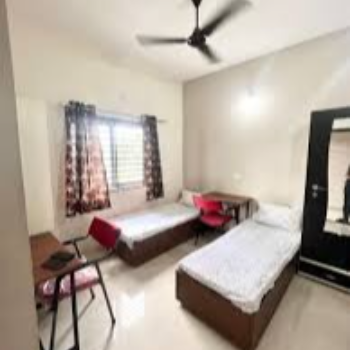In the bustling city of Bengaluru, where skyscrapers touch the sky and the streets are alive with the hum of progress, lives Ramesh Kumar. He is one among millions, a migrant worker from a small village in Uttar Pradesh, who moved to this city of dreams to build a better future for his family. But beneath the glittering skyline lies a challenge that many like Ramesh face—a place to call home.
Ramesh’s story is not unique. With rapid urbanization, cities across India are magnets for workers seeking employment opportunities. Yet, the journey from a rural village to an urban hub is fraught with hurdles, the most significant being accommodation. Ramesh, like many, initially found himself in a cramped, dingy room shared with six others, far from the comfort and safety he longed for. It was a place where privacy was a luxury, and security was always on the line.
This is where worker hostels and boarding houses come into the picture. Designed specifically to cater to the needs of migrant workers, these facilities offer more than just a roof over their heads—they provide a sanctuary, a home away from home.
Imagine Ramesh’s relief when he discovered a worker hostel in the heart of Bengaluru. The moment he stepped inside, he was greeted with clean, spacious rooms, each designed with the comfort of its occupants in mind. No longer did he have to worry about basic amenities; everything from clean drinking water to hygienic washrooms was readily available. But beyond physical comforts, it was the sense of community that truly transformed Ramesh’s life.
In the hostel, Ramesh met others from different parts of India, each with a story to tell. There was Sunita from Bihar, who worked in a garment factory, and Akash from Rajasthan, an aspiring chef. Together, they formed a support network, sharing meals, celebrating festivals, and lending a listening ear when homesickness hit hard. The hostel became more than just a place to sleep; it became a vibrant community.
This transformation highlights the major problem that worker hostels solve the emotional and practical challenge of isolation and insecurity faced by migrant workers. By offering a safe, affordable, and welcoming environment, these boarding houses not only meet the basic needs of workers but also nurture their emotional well-being.
Moreover, these facilities are strategically located near industrial hubs, reducing the daily commute and allowing workers to save time and money. For Ramesh, this meant more time to upskill himself, attending evening classes to learn English, hoping to climb the career ladder.
The impact of such accommodation solutions is evident in case studies from cities like Mumbai and Chennai, where worker hostels have significantly improved the quality of life for thousands of migrants. Take the example of Anjali, a young woman from Odisha, who moved to Mumbai to work in the IT sector. Initially overwhelmed by the city’s pace and the struggle to find affordable housing, Anjali found solace in a women’s hostel. The security, coupled with the camaraderie among residents, empowered her to focus on her career without the constant worry of personal safety.
In conclusion, worker hostels and boarding houses are not just about providing shelter; they are about building communities, offering security, and enhancing the quality of life for migrant workers like Ramesh. As more people move to urban areas in search of livelihood, these facilities play a crucial role in bridging the gap between dreams and reality, helping individuals thrive in unfamiliar cities.
For Ramesh, the hostel was a turning point—a place where he found not just a bed, but a home. It is a testament to the power of thoughtful accommodation solutions in transforming lives, one room at a time.
Visit Vyaparify Site:
https://id.vyaparify.com/man-taz-pg-servicesLocation:
https://maps.app.goo.gl/PSmbS4MwdvHLyP8j9 
